
In this blog you can find all information with many photos about traveling: best cities, beaches, hotels, tours, islands, seas, mountains and more....
Saturday, December 31, 2011
Lake Lovatnet - Images And Details
Lovatnet is a lake in the municipality of Stryn in Sogn og Fjordane county, Norway. It is located about 2 kilometres (1.2 mi) southeast of the village of Loen and about 6 kilometres (3.7 mi) east of Olden. The lake lies just 2 kilometres (1.2 mi) southwest of the mountain Skåla. The water from the lake flows down from the mountains; especially from the Jostedalsbreen and Tindefjellbreen glaciers. It then flows out through the Loelva river into the Nordfjord.


It Happens Only in Africa - Most Hilarious pictures
Africa is the world’s second-largest and second most-populous continent, after Asia. At about 30.2 million km² (11.7 million sq mi) including adjacent islands, it covers 6% of the Earth’s total surface area and 20.4% of the total land area. With a billion people (as of 2009, see table) in 61 territories, it accounts for about 14.8% of the World’s human population.


Friday, December 30, 2011
Richest Village of China - Huaxi Village
Huaxi is a validation of the Marxist-Leninist dream; a centrally-planned utopia where collectivism has made everyone not just equal, but rich as well. Each family is given its own "modern European-style villa" as well as free medical care, education and daily staples such as rice, cooking oil and fruit and vegetables from the village's organic farms and greenhouses.
Huaxi is said to be China's richest village with 60 companies owned by the citizens. With an annual revenue of $8bn from manufacturing, the eastern Chinese town is now investing in tourism. Huaxi recently opened a luxury hotel which is in one of the world's highest towers.
China's richest village, celebrates its 50th anniversary with the inauguration of a massive 328-meters (1,076 feet) high skyscraper that screams for attention from its lowly skyline.
Huaxi Richest Village China

Huaxi is said to be China's richest village with 60 companies owned by the citizens. With an annual revenue of $8bn from manufacturing, the eastern Chinese town is now investing in tourism. Huaxi recently opened a luxury hotel which is in one of the world's highest towers.
China's richest village, celebrates its 50th anniversary with the inauguration of a massive 328-meters (1,076 feet) high skyscraper that screams for attention from its lowly skyline.
Huaxi Richest Village China

Technical Museum Of Berlin
The German Technical Museum is the youngest museum of Berlin. It is located in the bulding of the former railway station Anhalt. The museum is divided into main zones - devoted to aeronautics, shipbuilding, railway transport and -TV and - photo industry. Each department, in its turn, reveals many related sections: chemical industry, heavy industry, transport, computer technologies, automatization etc.
Legendary scooter
Vespa
A very interesting exhibit in the department of sea transport - a miniature submarine of Hitler's Germany carrying two torpedoes and controlled by one person.


The Indian Ancient Observatory
The old observatory "Jantar Minar" was found by the rajah of Jaipur. Some very ancient instruments for the sun and stars observation remained here. With their help astronomers can even predict eclipses.
The way to the observatory.
Tolstoy's street.
The ticket costs 250 rupees ( 5,5 dollars).
The sundial (Misra Yantra) was the first tool for time identification.
A shadow falls on the parapet and shows the current time.
Every instrument or building here has its own destination.
The memorable plate about the observatory foundation.
This is another instrument for time identification. It consists of a right-angled triangle and two arcs.
As big they are as accurate time is.
At night the North Star crowns these stairs.
But after the years of existence these constructions sank and their calculations became not so accurate.
The Ram Yantra is made for the identification of the zenithal distance and sun height.
These stone triangle walls are the end of the degrees scale.
With the help of that instrument ancient astronomers learnt about stars moving.
Jay Prakash Yantra is considered to be one of the most accurate instruments in the whole observatory.
All the rest instruments were constructed by using Prakash.
It helped to observe sun movements and zodiaс constellations.
This place has a special mysterious charm of the antiquity. And no one could even imagine that all these buildings were made without engines or computes that we use nowadays.


Terra-Cotta History Of China
It is quite a popular tourist destination, we know. But each time looking at the terra-cotta warriors you are amazed.
You've probably heard that all of them are of natural human size, and all faces are unique.
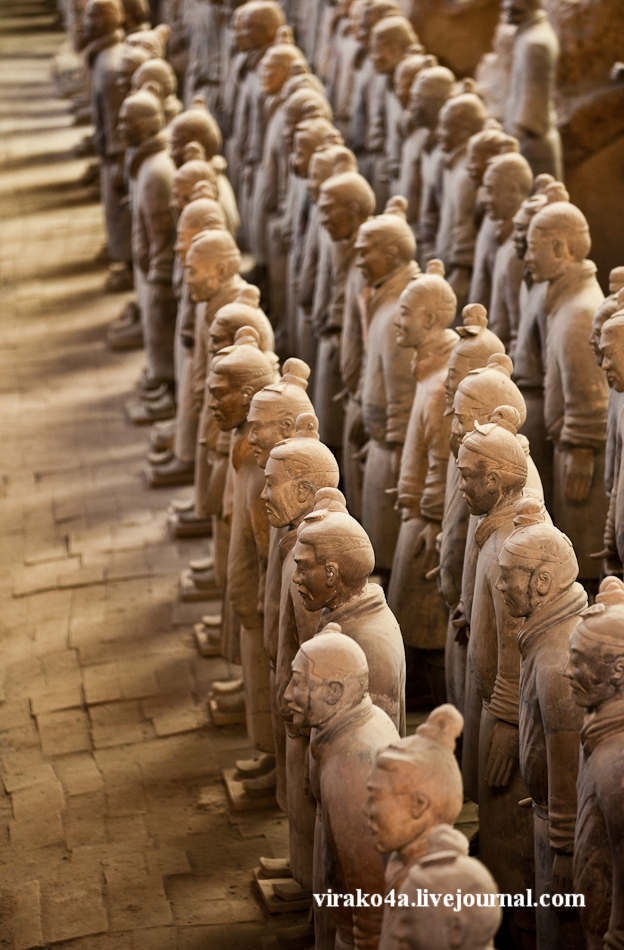
Chocolate Festival In London
Let us see the best masterpieces of British and foreign chocolate masters who gathered for Chocolate Festival in London.

Hens' Fate In Morocco
We've already seen how hens live and die in Iraq and what about Morocco? It it the same? The following pictures are exactly not for animal lovers or for nervous people, there will be blood, poor hens and rabbits. But it not so terrible indeed.
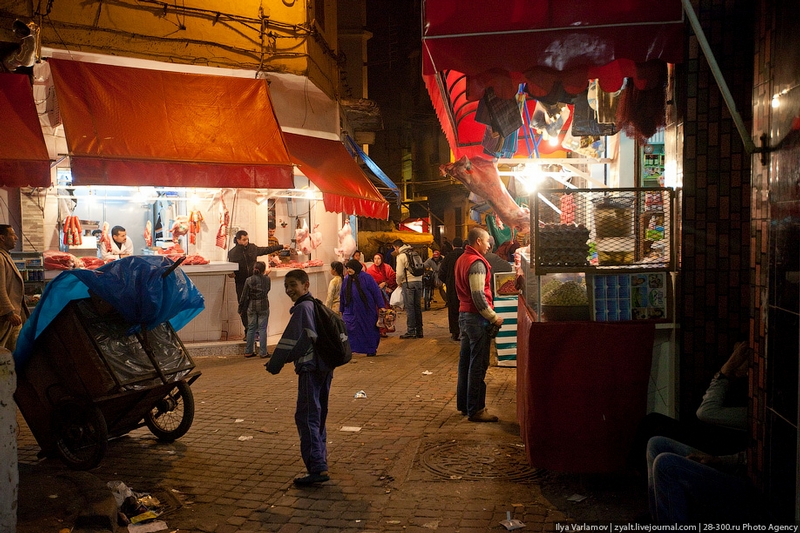
It seems that all towns in Morocco are just big markets where tourists can not only buy exotic food but also have a good time or find new friends without knowing the Arabic language.
Hens' Destiny In Iraq

It's the post of hens' truth, tough hens' truth. And for the truth we go to the hens' market of Iraq.
The "goods" are brought on special hens' vans and discharged on the ground. In order birds don't escape they are put in such cages.
Poor Life in Slums of China
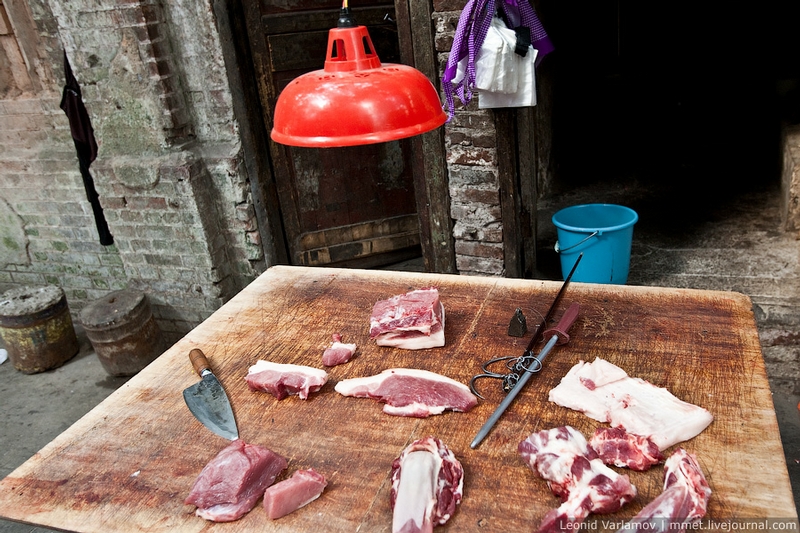
This part of China is never visited by tourists. It's always dark here, even in daylight. Its residents are poor but hardworking. They earn their lives trading... The place we're talking about is the slums of Guangzhou.
Thursday, December 29, 2011
Zion National Park, Utah
Why will you be stunned once you get here? Cause Zion National Park is magic! It is a green river, white trees, quiet red and green colors. And a red asphalt road, of course! Come here to become a fan of the Utah nature once and forever! These are the photographs from Zion National Park.

Wednesday, December 28, 2011
The Whole Human History In One Museum (part4)
Now it is time for technology. That is a new hall of cars from the 50s and 60s. A little car Heinkel.
Consumer technics.
Old TVs.
The Soviet TV "Leningrad".
The beautiful automatic machine for records.
Cinemacameras.
Soviet cameras.
Motorcycles and motorbikes of these years.
The photoprinter Siemens T 37 .
A calculator.
Radio sets.
A kitchen interior.
Then goes the hall of astronomy.
Herschel's telescope weighs 40 feet and was the biggest one in its time. Hershel found satellites of Saturn and Uranus by using it.
Globes of the stars sky.
The museum contains a great number of telescopes of different nations and different times.
The spectrometer.
An observatory in the Middle Ages.
Models of the modern observatories.
A mirror taken from a real telescope.
The hall of optics.
Modules show how light is refracted in different lens. Rays are replaced by lasers for better visualization.
The light refracting in glass.
The lens enlarges in the air but in the liquid medium the refraction is practically unseen.
An optical illusion.
The staging of spectacles selling.
Microscopes.
Tourists can watch cells or little insects.
The cosmos hall. The rocket A4/V2, 1944.
The compartment of the international space station.

The Whole Human History In One Museum (part3)
A plastic cylider for tourists' safety.
Helicopter fans.
The cargo helicopter.
The prow of a passenger air plane.
Engines.
A dispatcher room.
Propellers.
The module of the Soviet attack plane"IL-2"that was made for volunteers' money during the Second World War.
A centrifuge.
A Soviet pilot.
Pilots' equipment.

The Whole Human History In One Museum (patt2)
And that is the aeronautics hall. Here tourists can see the history of air navigation from kites till modern air planes.
Kites.
Ballon modules.
Modules of the first air planes.
Copies are life-sized.
A dirigable pilot.
Air planes of the 20th century.


The Whole Human History In One Museum (part1)
Deutsches Museum is one of the biggest museums of science and technology in the world. Practically all the evolution from ancient times till nowadays is shown here. The museum is located in Munich and contains more than 50 exhibition halls with the total area of 47000 sq.metres. It is really huge, it has 5 floors. A ticket costs 8,5 eu.
This is the central hall with ancient ships and sailers.
Sailer modules with great detalization.
Ships made from bones.
Bends.
The ship interior.
The wheelhouse.
"Titanic".
The engine room.
A cutter.
Screws.
The special pool for little boats.
There are a lot of dioramas, that is stagings of real life moments of sailers.
Navy measuring instruments.
Globes and rules for coordinate finding.
The bay diorama.
Military ships.
The module of one of the first submarines.
The whaling stand.
Ancient boats.
A real screw.
Anchors.
A submarine.
Torpedoes.
The Deutsch submarine.

On the Edge of the Earth (part5)
An abandoned military base of Saxa Vord. The military men left the island in 2005 and its population dropped from 700 to 500 people.
Puffins.
There are so many puffins on the neighboring islands that they are eaten. Their heart is considered delicacy.
Baltasound, the capital of Unst.
The northernmost post office in Britain.
The Baltasound Springers Pub is located in the courtyard of the hotel.
Everything's very laconic inside. If you look at the calendar over the bar you will see that the birthdays of all the 500 Baltasound's residents are marked there. All of them come to celebrate their birthdays to the only pub on the island.
Some more pictures from Hermaness.
This place is called Saito. It's famous for the fact that the albatross named Albert flew here for 15 years. But as you probably know, no albatrosses should ever be in the Northern Hemisphere.
The helicopter of the Coast Guard flies above the island several times a day .
The end of all roads.
An inhabited area.
The northernmost beach.


On the Edge of the Earth (part4)
The lighthouse isn't abandoned. It works automatically as all lighthouses of Britain.
Beauty. Precipices. Clouds. And a wavy ocean.
One can often see corpses of animals there. Sorry, but there are lots of them...


On the Edge of the Earth (part3)
These are large arctic skuas. Birds prefer taking away the other animals' prey. Their world's largest colony lives here, in Hermanesse.
The locals advise to move carefully here as the birds defend their nests and can attack you
But besides the skuas there are hundreds of gannets. They are huge birds with a wingspread of up to 180 cm.
The height of the cliffs is quite impressive, about 200 m.
The water is so clean here.
And this is the fulmar petrel.
There are almost no people in the reserve but lots of sheep...
Who walk along the very edge of the Earth.
From here one can already see the Muckle Flugga Lighthouse, till 1995 - the most northerly inhabited point in Britain.
These are the remains of the hut demolished by the hurricane. Actually, Hermaness can sometimes be quite a dangerous place, especially in winter. Ten years ago, on December 31, two girls died in the fog and hurricane. There were some other deaths when people fell from the 200-meter cliffs.
The view on the South.
Gannets are everywhere.
Outsta - the last piece of the British land. No land is further from it.


On the Edge of the Earth (part2)
At regular intervals you can see Cattle Grids on the road. Holes in the lattice are so great that sheep are not able to cross it. Even a man should cross it cautiously.
Muness Castle. In 1627 it was burned by the French pirates, then twice resold, and in 1750 finally abandoned.
Wherever you turn your head on the island, everywhere are the ponies.
Another grid...
The last picture of Muness... and continue our travelling.
This is Baltasound, the capital of the island, and its sacred garage (the center of life in Baltasound).
Except for the garage and filling, there is also a shop, cafe, ATM, toilets, cycle hire and the Internet.
Winds are too the northernmost.
The island is 12 x 5 km but somebody still manages to get into a car accident.
On halfway from the garage to Baltasound there is a bus stop. Perhaps one of the weirdest bus stops in the world.
You can sit here for hours waiting for the bus that may not come. There is even not a schedule. In fact, bus stops are no needed on the island because those buses that go on its only road pick up all the walking people.
Local residents equipped the bus stop all by themselves.
Unfortunately, nothing works here.
Another farmer. Generally, local people are surprisingly sincere, even looking very harsh with their chapped faces. 500 people live on the whole island.
The only hotel on the island. The price for a room and breakfast is 50 pounds.
The guests can use Wi-Fi for free here.
The Hermaness National Nature Reserve begins with a lunar landscape.


On the Edge of the Earth (part1)
When talking about extreme points of Britain, Land's End and John o'Groats first come to the tourists' minds. But Land's End is the westernmost point of England, and John o'Groats is generally unremarkable from the geographical point of view. In spite of it, the places are very popular. But we're not going to visit them today... Our destination is not only the very edge of the British lands but almost the edge of the Earth (as only the North Pole is further from it). This place is called Unst Island.
Among the three Shetland Islands Unst is the smallest. To get there you should take a ferry on Mainland island which is absolutely free to pedestrians.
The pier of Unst island.
Famous shetland ponies graze near the road.
By the way, there is only one road on Unst island.
When you are travelling across other parts of Britain you can see signs indicating in what direction the North is located but here you won't see such signs as Unst is itself the very North.
Belmont turned out to be a small farm.
With no people around.
This is the northernmost hostel of Britain which costs 12 pounds per night. If you decide to spend a weekend in such a wonderful place don't forget to provide yourself with some food because the nearest shop is in Baltasound and that is quite far from here.
This pony seems to be domestic.
Local means of transport. On the Shetland Islands the distance from any point of the land to the sea is never more than 8 km.
The school where 7 pupils go to.
The road to Muness.
The passing by shepherd.
Some megalith.
Scotland... Sheep are sacred here.


Idling at the Flea Market of Hamburg
Ahead of Easter in all the districts of Hamburg people arrange flea markets. Near Kampnagel there is a market where many old things can be found. However Germans willingly buy secondhand items. Sometimes really worthy things may be bought inexpensively.
Mix of flowers and china.
Kampnagel - one of the boat stations in Hamburg.
Kampnagel - one of the boat stations in Hamburg.
"Calculating material - souvenirs production". Soviet propaganda has gone this far, to German flea markets...
Various tableware and pseudo-crystal. Many sellers are just happy to escape from home and idle here...
Attention! Toads!
Miele press! Feel the power of technologies!
Chairs, stools, cupboards - all of the middle of the 20th century - already antiques - right?
A wonderful composition - pails with a female head.
Germans love china...
... and science ... In 20 minutes this man had a line for his test tubes, measuring glass, bottles ...
Such a bottle is a cool gift to Russian Germans.
Guess what is this?
Sometimes the whole cupboards are sold with all staff inside.
Everyone may find something he/she would like.
And here's the only stand that remotely reminds of the theme of the market - antiques.
People rest, eat, drink...
It's not some electric grill: the lady was nervous when she was photographed. Three types of sausages tasting "right from the fire" - prices are on the orange note.
Quiet and peaceful
And someone's going to open the sailing season...


History of Computer Games In One Place
Everybody likes playing games that may be for children or for adults, intellectual or sports, hazardous or not. After the computer appearance, games came into our lives to stay forever. Nowadays millions of people play them.They gave the possibility to abstract from problems and stress, to have a good time or even to earn a million dollars. May be that world is really better than ours.

Somebody divides the notions "computer" and "video" games. And it is reasonably to say that there is no serious matter how to call them. Only one distinction: computer gamers use computers, video gamers play special TV
Tuesday, December 27, 2011
Wonders of Hokkaido Island
Akan Lake is first of all unique due to marimo algae, they don't grow anywhere else. Marimo looks like green balls from some millimeters to a meter in diameter. Until recently each Japanese who has an aquarium wanted to have such a ball. As a result of such striving marimo has begun to disappear, and now the special environmental program works to save the unique algae. However it does not prevent street vendors from selling little green balls at each corner near Akan. The pictures of marimo can be seen below.

In Ainu village there live about 130 ancestors of the Ainu - those people who had lived here when the Japanese only began to settle on these lands. Today it's not much that has remained from them. 36 families in Ainu Kotan - the biggest commune of the Ainu in Hokkaido. Though the village is authentic, it's fully tourism-oriented, all in souvenir shops where really cool wooden carved goods are sold, unfortunately quite expensive though. And the traders look very exotic - with big beards.
Kushiro is famous for its cranes - tantyo, about 900 of them live here. The Ainu used to call these birds "Gods of the bogs".
Ainu village
The carver - an ancestor of the ancient Ainu.
Owls are the symbol of these places, they sit everywhere and watch what happens around.
The unique algae marimo.
Only here they grow - in Akan Lake.
Kushiro - on these plains tantyo cranes live in the season.
Unfortunately in the dead season they can be seen only in the pens.
Another place to visit in Hokkaido - The National Park Shiretoko. It occupies the further north-eastern part of the island. The word "Shiretoko" itself in translation from the Ainu language means "end of the world". And it's true. There's no civilization there. No roads. But there are many bears, waterfalls and impassable thickets.
If you want to go there you'll have to register and get a visa. There are rangers in Japan even in those places where ordinary people would never go, if one is caught without a permitting document the fine will be huge. Even if you aren't caught you'd better register anyway, as it was written in Lonely Planet: "if you, crossing another impassable gully, break your leg, you may only hope that vessels going by will notice you sooner than bears".
Here is located the famous Siretoko Goko - five lakes that look like "God's five fingerprints". The lakes are wonderful indeed.
Don't forget to wash legs in the Sea of Okhotsk.

Saying Cheese - Mean Holland, Saying Mills - Mean Holland ...

Near Amsterdam in a little village Zaanse Schans there is an ethnographic museum where we can know more about traditional Dutch symbols: mills, cheese and klomps that we have already written about. In a good weather it's especially pleasant to walk here.
Radio Museum of Bellingham
This museum is one of the best of such kind nearby. Though it's thematic it's interesting both for adults and kids.
The museum is full of interesting exhibits beginning with electrostatic machines generating scary snapping sparks...
... Hundreds of radiosets
How modern ones may compare to such masterpieces?
Radio receiver dated 1941
Radio sets
Edison sound reproducing machine that still works.
Children like experiments with Tesla Coil.
Edison artifact bulb - that very Edison bulb! How aren't they afraid of burning it?
One of the first X-ray machines.


Cyprus Carnival 2011
Carnival of Cyprus will never be better than Brazililian Carnival with its posh Venetian masks, but here, in Cyprus, it's a huge event that is worth seeing.
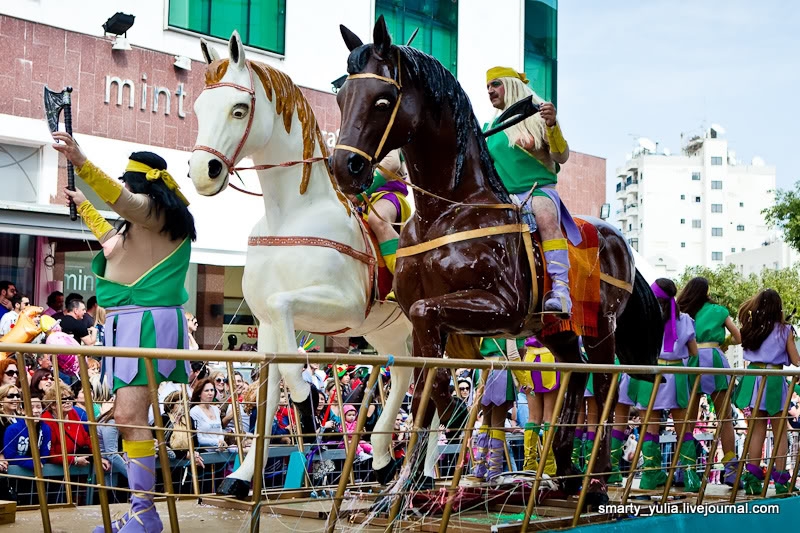
Night Climbing The Volcano of Bali
Those who professionally shoot sunrises probably know that it's like biathlon - you should run fast and shoot straight, separately it doesn't work. But if you manage to do that, you'll get truly wonderful photos.
Splendid golden mist
And in such shades green grass acquires an intersting color.
A little cute rainbow - look better - it's a double rainbow!
Black ground hardened after eruption of the volcano in 1947. Tiny white spots are big trucks that take away natural construction material from there.
Monkeys everywhere...


Thursday, December 22, 2011
Lost In the African Mountains
Today we are back in Africa, climbing picturesque mountains in a foggy day.
Mackinder Valley.
Landscapes change nearly every minute.
A straight path from Old Moses
A local guide
Snowy tops of the mountains slowly appear out of the turn. Very very beautiful.
Here is a hut that has operating personnel, but has no electricity, only huge storage batteries and solar batteries. The price - 1500 shillings per one a day. The camping is a bit higher, 300 shillings per one.
Pay attention to the size of vegetation against the tent... The height - 4200m.
An inventive way to dry socks.

Captive of the Beauty: Ancient Egypt
These exhibits are not from some museum of Egypt, they are a part of the State Museum of Fine Arts in Moscow.

The history of Ancient Egypt, its beauty canons, are preserved here, in Russia.

Emerald Buddha Temple In Bangkok

This is a temple complex Vat Prateo in Bangkok. Probably it's main value is Emerald Buddha Temple, it attracts buddhist pilgrims from all over the world. It should be noticed that this temple is a place where prays the current Thai king Rama IX. It's strictly forbidden to photograph inside so the buddha itself may only be described in words: 66 cm tall and 48 cm wide together with a pedestal, portrayed in a traditional pose - sitting his legs crossed. And in fact, he's not emerald, but made of green jade. Probably something like this:
The Berlin Wall: Reminder Of Past Times
The Berlin Wall (Ger.: Berliner Mauer) is a state reinforced barrier between the German Democratic Republic (GDR) and West Berlin. It was constructed from 1961 till 1989 and its total length is 155km.
At midnight, the police and units of the East German army began to close the border and, by Sunday morning, 13 August, the border with West Berlin was closed. East German troops and workers had begun to tear up streets running alongside the border to make them impassable to most vehicles and to install barbed wire entanglements and fences for 156 km around the three western sectors, and the 43 km that divided West and East Berlin. During the construction some underground railway stations were closed. Many soldiers watched by the Wall all day long with orders to shoot anyone who attempted
to defect.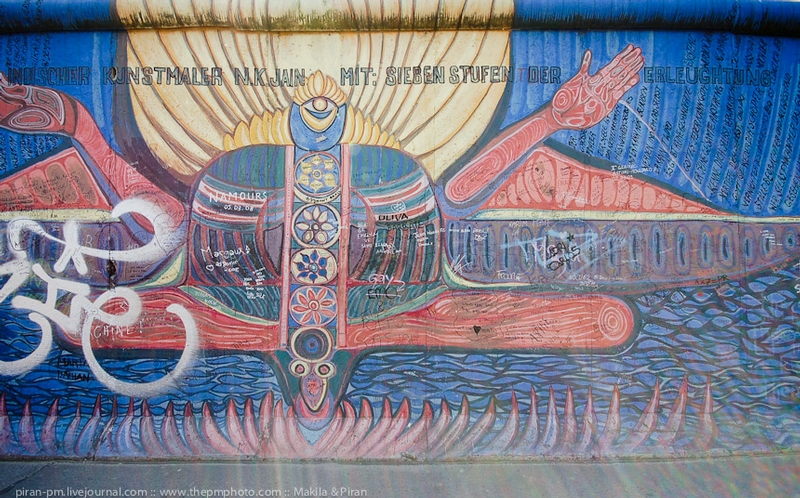
Subscribe to:
Posts (Atom)